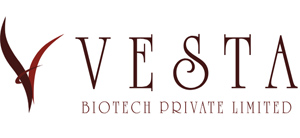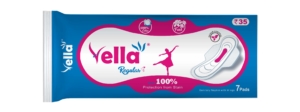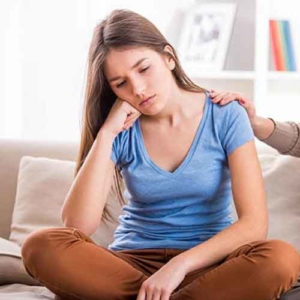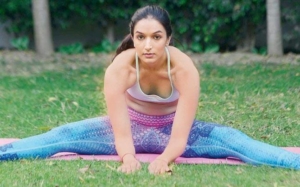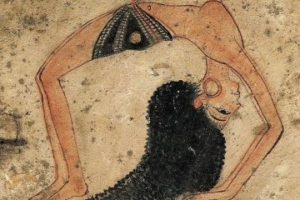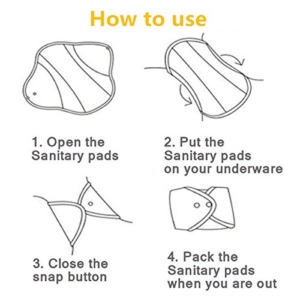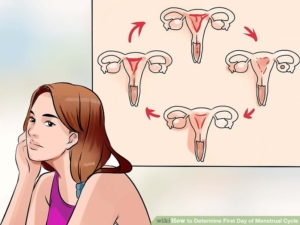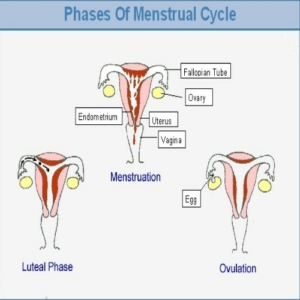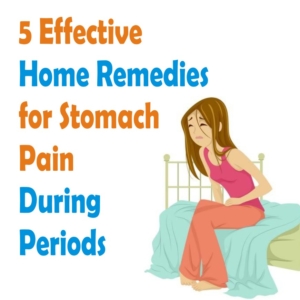Vella Sanitary Pad / Sanitary Napkin
- Vella is recommended by most of the doctors as safe, comfortable and effective sanitary napkin, which provide full protection during periods.
- Vella Sanitary pads are the most advanced technology sanitary pad widely used for menstrual management and still they are economical and easy available in India.
- Vella Sanitary Pad are safe, comfortable & effective, so that nothing stops you from going out and living your life.
- Vella Sanitary Pad is manufactured under the most hygienic health conditions making it one of the safest sanitary products to use.
- Our pads use wings technology to provide comfortable full coverage
- Vella sanitary pad is uniquely slim and its shape can fit into any panty liner without the feeling of bulkiness or compactness.
- Vella sanitary pad is a unique pad that was created with the purpose of providing a perfect blend of softness, slimness and comfort while serving as protection for women. Vella is designed and packed by Vesta Biotech Private Limited, a company dedicated to providing the best quality of its products to the public.
Common Problem during Periods
- Problem: – Feeling Depression
Luteinizing hormones and estrogen affect the heart along with the body. Before menstruation occurs, the secretion of luteinizing hormones can lead to feelings of irritation and depression since this hormone tends to throw emotions off-balance. In addition to this, physiological changes like menstrual pain and discomfort in delicate parts of the body can also lead to depression.
Solutions: When feeling irritation and depression, please do not put more mental or physical stress on your body than necessary. Get plenty of sleep, eat balanced meals and keep your body warm so that the hormonal rhythm of your body isn’t disrupted. Make an attempt to remove any sources of stress in your daily life. Some strategies for doing this are going to karaoke and singing loudly (which can get rid of irritation), listening to music you like, drinking herbal tea, and relaxing. To avoid stress and recover from mental and physical fatigue, relaxation is important. - Problem: – Anaemia
During menstruation, anaemia can occur due to a lack of blood heading to the brain. Instead, it heads to the uterus, and as the supply of blood heading to the brain decreases, the amount of haemoglobin – which carries oxygen to the whole body – also lessens.
Solutions: The recommended amount of iron for an adult woman is 10 to 12 milligrams. Iron, which is contained in haemoglobin, decreases by about 20 milligrams even during regular menstruation. Therefore, more iron should be consumed during this time. There are generally two types of iron: heme iron and non-heme iron. When it comes to non-heme iron, which is absorbed at lower rates into the body, taking vitamin C is a good idea since it boosts absorption. - Problem :- Fatigue
During the beginning stages of menstruation and right before it starts, fatigue can occur along with swelling, chills, and poor blood circulation. Since more luteinizing hormones are secreted right before menstruation, the amount of serotonin decreases. Because serotonin has the effect of calming and regulating functions in the brain, a lack of serotonin can lead to fatigue.
Solutions: During menstruation, fatigue can be remedied by improving blood circulation, which also reduces swelling. In order to keep the lower half of your body from dropping to a lower temperature, please exercise and stretch in moderation. Be careful in regards to consuming too much sodium as well, since this can also lead to further swelling and fatigue. Eating foods that have a lot of potassium such as natto, spinach, and bananas will help to improve the metabolism and get rid of extra salt in the body. - Problem :- Skin Issues
Before menstruation occurs, more luteinizing hormones are secreted. This, in turn, promotes the secretion of more sebum. Due to the increase in sebum, acne and pimples are more likely to come about. Menstruation is also a period when the skin is more sensitive and is more likely to be damaged, so having skin issues during this time is more common.
Solutions: During menstruation, take care to remove dirt, waste, and any extra sebum from the skin in order to keep it clean. Rich creams and oily skin products may cause further skin issues to occur, so please wash your face and maintain a moderate amount of moisture through products. Just eating more vegetables may be enough to solve any skin problems. The skin is also especially sensitive to ultraviolet rays during this time, so please take care to block any UV rays. If your normal makeup or sunscreen causes your skin to feel irritated, switching to less aggressive products may be a good idea.
Menstrual cramps to pregnancy-related ailments, these yoga asanas are meant for every woman
Yoga for every woman
Yoga can be amazing for women’s health–everything from PMS and menstrual cramps to simple exercises to shape up. Yoga can help women enjoy fantastic health and the perfect body, while helping with hormonal stability and uplift of mood. Here are five asanas women must do everyday to keep common problems away.
Yoga for PMS/Menstrual cramps
A monthly ordeal for many, PMS can cause a whole range of symptoms ranging from irritability, over-the-top emotions and a lot of pain. Just a few minutes of yoga can really help with these pesky symptoms. I have many students who have gotten off all pills and painkillers by doing just these asanas.
1. Seated wide leg straddle – Sit tall and spread your legs out to the side. You should feel a little tension, but not too much.- Walk your hands between your legs, keeping your torso long.- Stay in this position and breathe, feeling the stretch in your body.- Make sure to breathe.
2. Janu shirshasana – Sit with the legs outstretched and the feet together.- Bend the left leg, place the heel of the foot against the perineum and the sole of the foot against the inside of the right thigh. Keep the left knee on the floor.- Place your hands on the top of the right knee, keeping the spine straight and the back muscles relaxed.- Now, slowly bend forward, sliding the hands down the right leg, and grasp the right foot.- Try to touch the knee with your forehead. This is the final position.- Keep the back relaxed and make sure you don’t strain.- Change sides and repeat with the right leg bent and the left leg straight.
3. Cat/Cow stretch – Come onto your fours. Form a tablelike shape, so that your back forms the table top and hands and feet the legs.- Keep your arms perpendicular to the floor, and hands under the shoulders and flat on the ground, while keeping your knees as wide as your hips.- Look straight ahead.- As you inhale, raise your chin and tilt your head back. Push your navel downward and raise your tailbone.- Hold the cat pose and take long, deep breaths.- Follow this by a countermovement, the cow pose. As you exhale, drop your chin to your chest and arch your back up; relax the buttocks.- Hold this pose for a few seconds before returning to the table-top position.
4. Dhanurasana- Lie back on your stomach, raise your legs and grab your ankles with your hands so that your body is in the shape of a bow.- Stay in this position and breathe.*If there is only asana that every woman to do, it is this one–it is great for your reproductive organs, it stimulates the ovaries, stabilises hormones and tones the abs.
Yoga for pregnant women
Studies show that daily yoga and mediation can improve birth weight, reduce premature birth and overall medical complications for newborns. It also helps get rid of common ailments related to pregnancy.
5. Vipariti karni – This asana gives all the benefits of inverted asanas like sheesh asana and sarvang asana. It reverses the downward and outward movements of energy, revitalising and expanding the awareness. It also increases the metabolic rate.- Lying on your back, bring your legs up in the air balancing on your hips.- Gaze at your toes and breathe.- Your back should be on the ground.
THE HISTORY OF SANITARY PAD / SANITARY NAPKIN
The sanitary pad is far and away the most widely used method of menstrual management. It is easy to use, easily accessible, and pretty straightforward. The pads we use today are made up of mostly synthetic, bleached material, but what were they like fifty years ago? And when were they invented?
Menstrual pads have been mentioned in history as early as the 10th century in Ancient Greece, where a woman is said to have thrown one of her used menstrual rags at an admirer in an attempt to get rid of him.
Before the disposable pad was invented, most women used rags, cotton, or sheep’s wool in their underwear to stem the flow of menstrual blood. Knitted pads, rabbit fur, even grass was all used by women to handle their periods.
The very first disposable pads were thought up by nurses, looking for new methods to stop excessive bleeding, particularly on the battlefield. The first pads were made from wood pulp bandages by nurses in France. It was very absorbent, and cheap enough to throw away afterwards. Commercial manufacturers borrowed this idea and the first disposable pads were available for purchase came as early as 1888 – called the South ball pad. In America, Johnson & Johnson developed their own version in 1896 called Lister’s Towel: Sanitary Towel’s for Ladies.
The problem was, women did not feel comfortable asking for this product, so in the early 1920s, the name was changed to Nupak, a name that did not describe the product.
Even though sanitary pads were available during this time, they were much too expensive for most women, and they continued using more traditional methods. When they could be afforded, women were allowed to place money in a box so that they would not have to speak to the clerk and take a box of Kotex pads from the counter themselves. It took several years for disposable menstrual pads to become commonplace.
The earliest disposable pads were generally in the form of a cotton wool or similar fibrous rectangle covered with an absorbent liner. The liner ends were extended front and back so as to fit through loops in a special girdle or belt worn beneath undergarments. This design was notorious for slipping either forward or back of the intended position.
Later, an adhesive strip was placed on the bottom of the pad for attachment to the saddle of the panties, and this became a favoured method with women. The belted sanitary napkin quickly disappeared during the early 1980s, thank goodness.
Over the last twenty years, the sanitary pad industry has advanced by leaps and bounds. Gone are the days of bulky belts and diaper-like thickness. With the invention of more absorbent materials and better designs, pads are more comfortable and practical than ever. The invention of ‘wings’ keeps pads in place in the underwear, and the invention of ‘scented pads’ reduces odour.
Vella Sanitary pads are the most advanced technology sanitary pad widely used for menstrual management and still they are economical and easy available in India.
Vella Sanitary Pad are safe, comfortable & effective, so that nothing stops you from going out and living your life.
How to use Vella Sanitary Pad / Sanitary Napkin
Using Vella sanitary napkin is actually pretty easy. Here are a few basic steps on how to wear a sanitary napkin:
- Remove the paper on the back side of the pad and place it on your panty
- Remove the release paper from wings. Wrap the wings around both sides of the panty and press firmly
- Before disposing the pad in a dustbin, wrap it in paper
- Don’t dispose of the pad in a toilet or flush it as it may clog
Now that the part on how to use napkin during periods is clear, here is a word of caution! For your comfort and to avoid odour, one thing you need to do is change your pad every few hours. This is very important considering that the blood, vaginal mucus and other impurities that your body is throwing out should not be in contact with your skin for too long! Hence, changing your pad every 4-5 hours is considered ideal.
Vella Sanitary Pad / Sanitary Napkin – Be ready with on-the-go stuff during your periods
When you have your periods it is important to be ready. It is important to have extra Vella sanitary pads properly stored in a clean pouch or paper bag, a soft towel, some paper tissues or towels, hand sanitizer, a healthy snack, bottle of drinking water, a tube of antiseptic medication (if you are using one).
Changing your pads regularly is essential, so you will need extra. More importantly storing them properly so that they don’t get contaminated is as important as changing. Pads that remain in your bag without a clean pouch to protect it can also lead to infections like UTI (urinary tract infection) or vaginal infections. The soft towel can be used to wipe your hands or face if you wash them. Paper towels are the important to wipe off the excess water after you wash your private parts. It is best you don’t use toilet paper for this as it tends to shred and tear when it touches water. Your hand sanitizer is a very important factor here. You will need it to clean your hands and you can use it to clean the flush knob and tap faucet as well. The snack is a backup in case you feel weak or run down during the day and the bottle of water is to help you stay hydrated throughout the day.
WHAT EXACTLY IS A PERIOD…AND WHEN WILL MY PERIODS START?
Since puberty has started, your first period is not far behind. It’s going to be okay—it’s just one part of your monthly cycle. However, periods get most of the attention because it’s the time when you bleed. As you grow up, try to get as much information about periods as you can. The best way is to talk to your mother or older sister. Ask questions without hesitating, it’s completely normal and natural. The more you know about what periods are the better prepared you will be to deal with them effortlessly.
- STAGE 1
Your cycle starts each month when your womb creates a fresh layer of blood-rich membrane. This is your body preparing to accommodate the egg just in case it gets fertilized. - STAGE 2
The next stage is ovulation, when an egg is released from one of your ovaries and travels to your womb. - STAGE 3
If the egg meets a sperm cell on its way to your womb and fertilization takes place, you can become pregnant. If this fertilization process doesn’t take place, your body will remove the unused blood-rich membrane lining your womb. This bleeding is your period. Yes, it’s that straightforward. - STAGE 4
Your period cycle can normally last from 3 to 7 days. Don’t be scared though. You’ll lose less than 20-60ml of blood. To simplify it, 4-12 teaspoons! That doesn’t sound all that scary, does it?
All these stages form a repetitive period cycle every month unless you get pregnant or until you begin menopause. Menopause phase normally occurs in women’s period cycle after they reach their forties and can vary from person to person. It marks the end of their reproductive cycle.
So, now we have more knowledge about what periods are, don’t we? Thus, we are better prepared for anything that they may throw at us! Stop worrying about periods, they are just a part of life, and pretty easy to cope with once you get a hang of your own body’s ways!
5 Effective Home Remedies for Stomach Pain During Periods
Periods can be quite a pain in the neck as well as various other body parts. But with the right diet and lifestyle it can be easier to live with it 5 days a month, month on month. Here are a few ways to tackle stomach pain during periods.
We girls don’t have it easy. Don’t let the men fool you into thinking there is all the attention, reservation and chivalry for you to enjoy. I’ll happily give it all up if I could just get rid of period pain. Emotionally and physically draining, I can’t wait for my periods to get done with. But until they do, it is 4-5 days of irritation, mood swings and stomach pain during periods.
What Causes Stomach Pain During Periods?
The cramps are our body’s way of getting rid of all the prepping it did for a baby. If there was no fertilisation, the inner wall of the uterus needs to shed. The uterus does this by contracting. Since the muscles cannot do this on their own, the body releases hormones, the worst of which is ‘prostaglandins’. Prostaglandins means pain and discomfort, let’s just know and accept that.
Also, during this process, the uterus gets no blood supply, which causes the muscles to spasm even more. And that is the reason for stomach pain during periods.
5 Home Remedies To Reduce Stomach Pain During Periods:
# 1 Papaya
Let’s begin talking about home remedies for stomach pain during periods with the papaya. Do not get fooled by its simplicity.
- The anti-inflammatory agent contains iron, carotene, calcium, and vitamins A and C that relieve muscle contractions.
- Gorge on papaya a few days before your periods and continue during those red letter days for pain relief.
# 2 Basil (tulsi)
Basil has religious significance, but do you also know the medicinal benefits of this plant during your periods? Tulsi leaves contain analgesic properties that relieve pain, without any side-effects.
Directions To Use:
- In a cup of water add a few basil leaves.
- Let the water boil for a bit to let the goodness of the leaves seep in.
- Turn off the heat, cover the vessel and allow the water to cool.
- Sip from this every few hours to lessen your stomach cramps.
# 3 Ginger
Ginger is my favourite herb, and rightly so. It is yummy and it also helps lessen stomach pain in periods.
Steps To Use:
- In a cup of water add some grated ginger.
- Boil the water for 4-5 minutes.
- Strain, add honey and squeeze some lemon juice.
- Drink a cup of this tea 2-3 times a day during your periods.
# 4 Carrot juice>
Stomach pain during periods can also be because of irregular periods. Include carrots in your diet to help regulate your cycle. >
How To Use:
- Chomp on raw carrots before and during your periods.
- You can also have a glass or two of carrot juice daily during your periods to feel better.
#5 Cinnamon>
The wonderful smelling kitchen ingredient is your friend during your periods.
How To Use:
- It is antispasmodic, anti-inflammatory and anticlotting.
- Add ¼ teaspoon cinnamon powder to a cup of hot water.
- Let it steep for a bit.
- Add a spoonful of honey and sip.
- Do this 2-3 times a day a few days before your periods to prevent cramps.
Try these remedies to stop stomach cramps from interfering with life. However, if the pain is persistent or stops you in your tracks every time, consult a doctor to rule out any medical issues. And remember to use Whisper Ultra Soft, to stay dry and comfortable during your periods.
Vella is recommended by most of the doctors as safe, comfortable and effective sanitary napkin, which provide full protection during periods.
Vella Sanitary pads are the most advanced technology sanitary pad widely used for menstrual management and still they are
